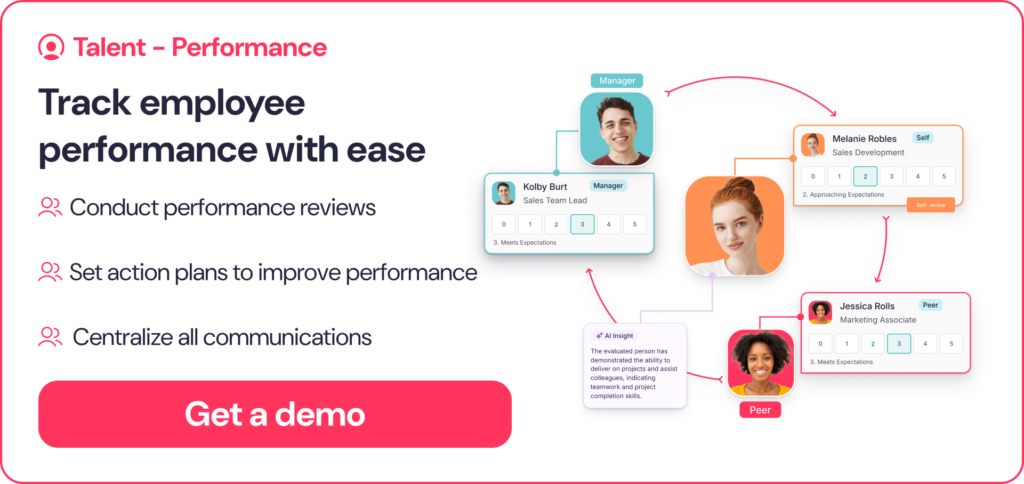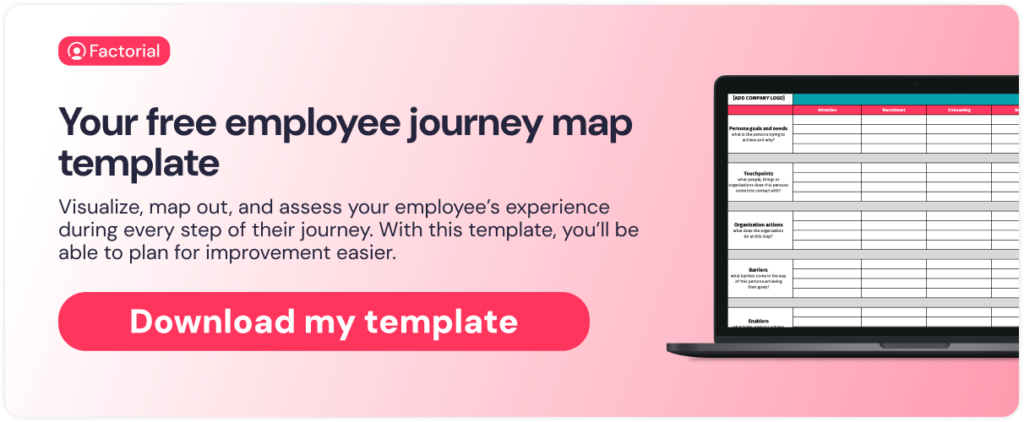Businesses are always in search of self-starting, go-getter candidates. However, they sometimes fail to capitalize on employee talents once they’re integrated into the company. In order to tap into employee potential, organizations are increasingly looking for employee development plan examples to help push their team to reach their full professional potential.
The idea behind this kind of strategic investment is simple: everyone benefits when companies provide employees with the tools, resources, and guidance to become their best selves.
And workers want opportunities to grow. According to a Gallup poll, 87% of millennials say that professional development and career growth opportunities are “very important” to them in a job. Further, workers say they change jobs primarily for career opportunities. If an organization aims to attract and keep the best talent, it should make an employee development plan a core component of its operations.
In this blog, we’ll run through everything you need to know about employee development plans, including what they are, the benefits they bring, examples of successful models, and how to create one.
What is an Employee Development Plan (EDP)?
First, let’s outline what a development plan for employees is not. An employee development plan is not:
- An EDP is not a Performance Improvement Plan. which outlines weaknesses and improvement areas for an underperforming employee.
What’s the difference between an EDP and a PIP?
The main difference is that development plans are used to provide employees support for their professional growth. On the other hand, a PIP is used to address underperformance or rectify a situation.
So, what is a development plan for an employee?
- An employee development plan, also called an employee growth plan, is the process of upskilling your workforce. It’s a way for your team to gain new skills, knowledge, and responsibilities.
A development plan charts a path for an employee’s career growth within the company. It’s an investment in the employee’s training, education, and career development, a robust plan that companies organize and arrange in conjunction with the employee.
Typically, EDPs are seen as a highly-effective tool that noticeably improves employee and company performance. All members of the organization can utilize a growth plan. However, each development plan is unique and tailored to each employee’s capabilities, interests, and needs, in line with the organizations’ goals.
What are the Benefits of an Employee Development Plan?
There’s a reason why the leading companies invest so heavily in their employees’ development: they benefit the employee and the organization.
First, let’s take a look at how they benefit employees.
Benefits for Employees
Improves Engagement
Employees plateau when they feel they’ve reached a professional dead-end. Development plans ensure they continue to progress and stay engaged within their role.
Fosters Trust
Modern employees increasingly expect their relationship with their employers to be symbiotic. A happy staff member believes an organization cares about their progress and role within the company. An employment development plan thus provides employees with the security they need.
Builds Confidence
Development plans give employees the training, guidance, and confidence to step up and take on more challenging tasks.
The Benefits to the Employer
Higher-Performing Employees
A 2019 SHRM study found that a skills shortage among candidates affected 75% of recruitment managers experiencing difficulty during the recruitment process. An employee development plan can provide existing employees with the skills that the HR team cannot find in the competitive employment marketplace.
Attract And Keep Employees
The best candidates want to continue to grow and develop throughout the career. That means they are more likely to apply for jobs at companies with employee development programs. Once they’re on board, they’ll be less likely to leave. This will help to reduce staff turnover — and save money on hiring and training a new employee.
Develop Leaders
If an organization is to be prosperous tomorrow, it needs to identify future leaders today. Employee development plans can turn a great member of staff into a leader. It is therefore a succession-management tool that helps to shape the future of the company.
Boost Profitability
Employee development isn’t free, but the costs can bring a handsome return on investment. One study found that small investments in employee development ($1,500 or less per employee per year) lead to an average of 83.5% higher revenue. Larger investments ($5,000 or more per employee per year) lead to an average of 104.9% higher revenue.
Creating an Employee Development Plan
A well-constructed employee development plan provides the member of staff with a clear pathway towards professional development. For that reason, you should create each with the specific employee in mind. Below, we’ll outline a five-step process for creating a development plan that benefits both the employee and the company.
Step One: Your Business Objectives
Development plans benefit the organization first and the employee second. The first step is to identify the company’s short-, middle-, and long-term business objectives and then locate the skills needed to reach those objectives.
Step Two: Meet With Your Staff
The employee must be happy with their development plan and should be involved in the creation process. Discussing their career ambitions, strengths and weaknesses, and professional goals will help you align the right business objective with the right employee. Employees can conduct self-assessments in through the employee portal in order to help HR get an idea of where to go.
Step Three: Assess the Employees’ Short- and Long-Term Potential
“Development” is the keyword in “employee development plan.” While an employee might have the potential to move into a management role, that doesn’t mean that they’re ready now. Thus each development plan should function as another step on the ladder that’ll eventually lead to the end goal. Accessing historical performance reviews can help analyze an employee’s readiness for a role.
Step Four: What Training Methods and Tools Will You Use?
There’s more than one way to learn. Development programs may utilize in-classroom training, mentorship programs, on-the-job training projects, job rotation, or a combination of several methods.
Step Five: Ongoing Management
Finally, determine how you will monitor and support your employee’s progress. How will the organization provide ongoing support and guidance to the employee? Make sure to address how often HR will check-in with the employee, how the employee can submit training-related expenses, and how you’ll integrate the employee’s new talents into their role/organization at large.
Employee Development Plan Examples
The specifics of each development plan will differ, but the basic template can look the same.
The development plan will outline the end-goal, an objective, a method for achieving that objective, and a timeframe for completion. Keep in mind that all goals should be SMART — that is to say, Specific, Measurable, Attainable, Realistic, and Timely.
Goal: The employee will receive a promotion and move one rung up the ladder.
Objective: To receive that promotion, the employee must improve their performance by 20% (compared to last year).
Method: The employee will complete an online course, attend a training weekend, work with a mentor, and so forth.
Completion: Set a target date for the completion of the action points. The employee should only work on one action point at a time. Further, it’s best to slowly build-up to the more challenging actions.
Along with the plan itself, be sure to have an ongoing dialogue with the employee and use performance management software to solicit and provide feedback.
Make a Plan to Foster Employee Growth
A development plan for employees doesn’t just improve performance and productivity. It also increases employee engagement and helps organizations to achieve their business goals, all for a relatively low cost. They’re a highly-valuable strategic tool that all forward-thinking companies must adopt in order to stay competitive.
To help get started on creating employee development plans, utilize a business management platform. Factorial makes it easy for you to boost your team’s productivity, reduce turnover rates, and implement employee development plans. This makes it easier than ever to ensure your team sticks to their plan and grows professionally.
Factorial is an all in one business management software solution that allows you to:
- Securely store all company documents such as an EDP.
- Monitor employee performance.
- Analyze KPIs and generate reports to make data-driven decisions.
- Track your team’s training progress.
- And so much more.



